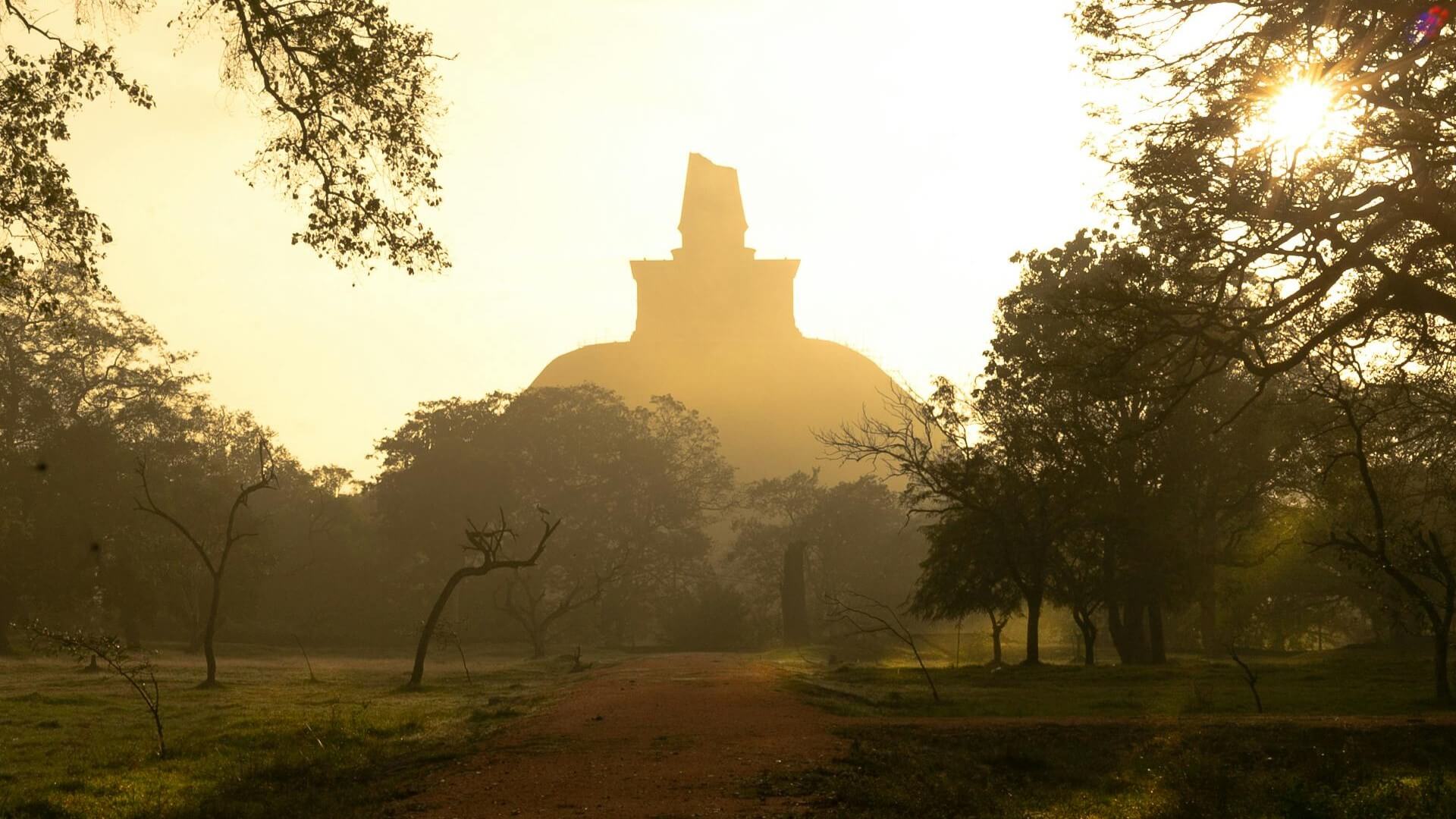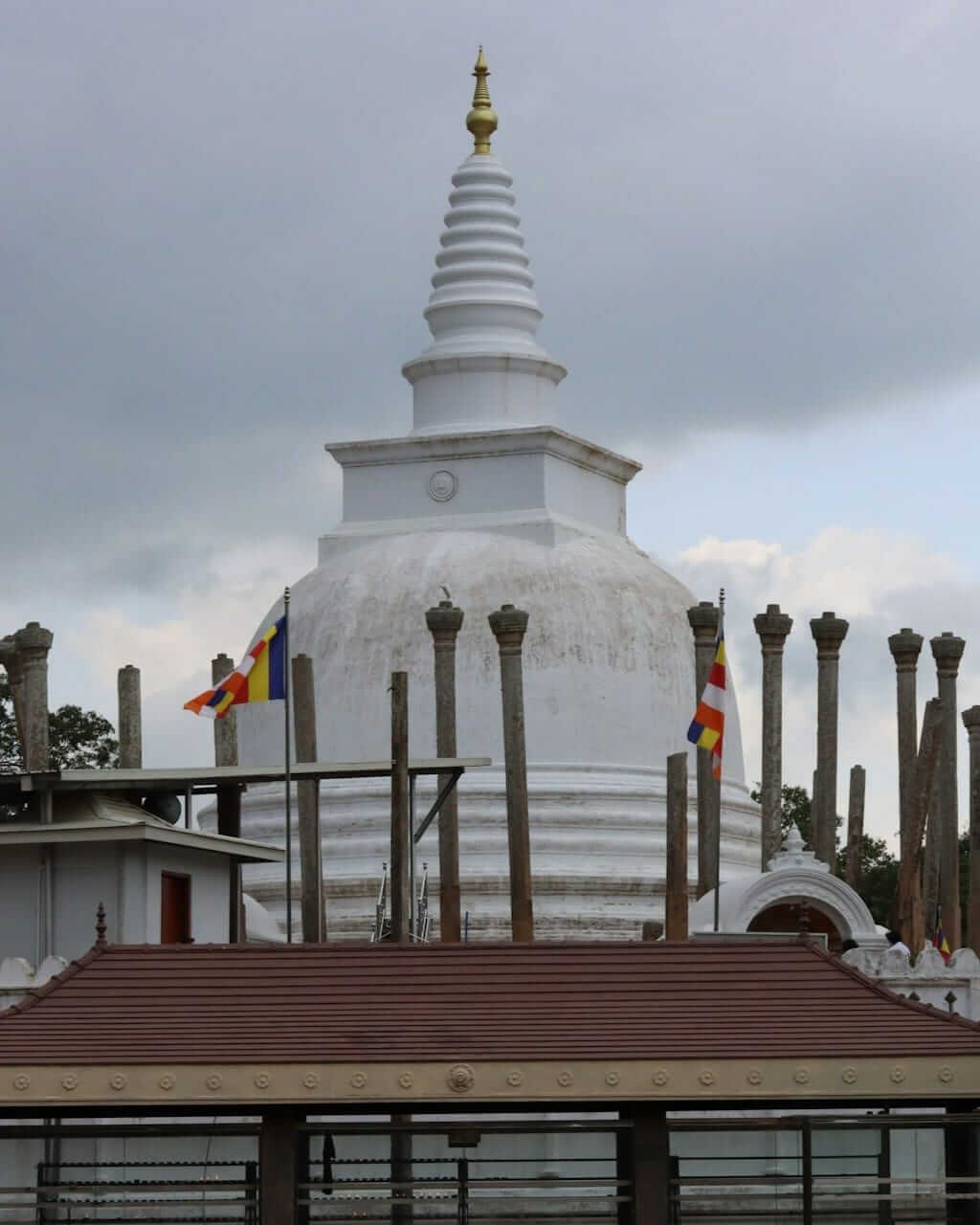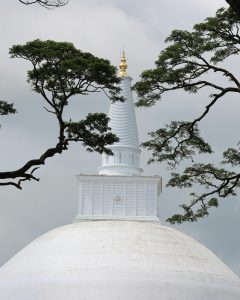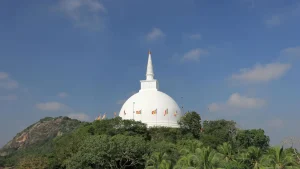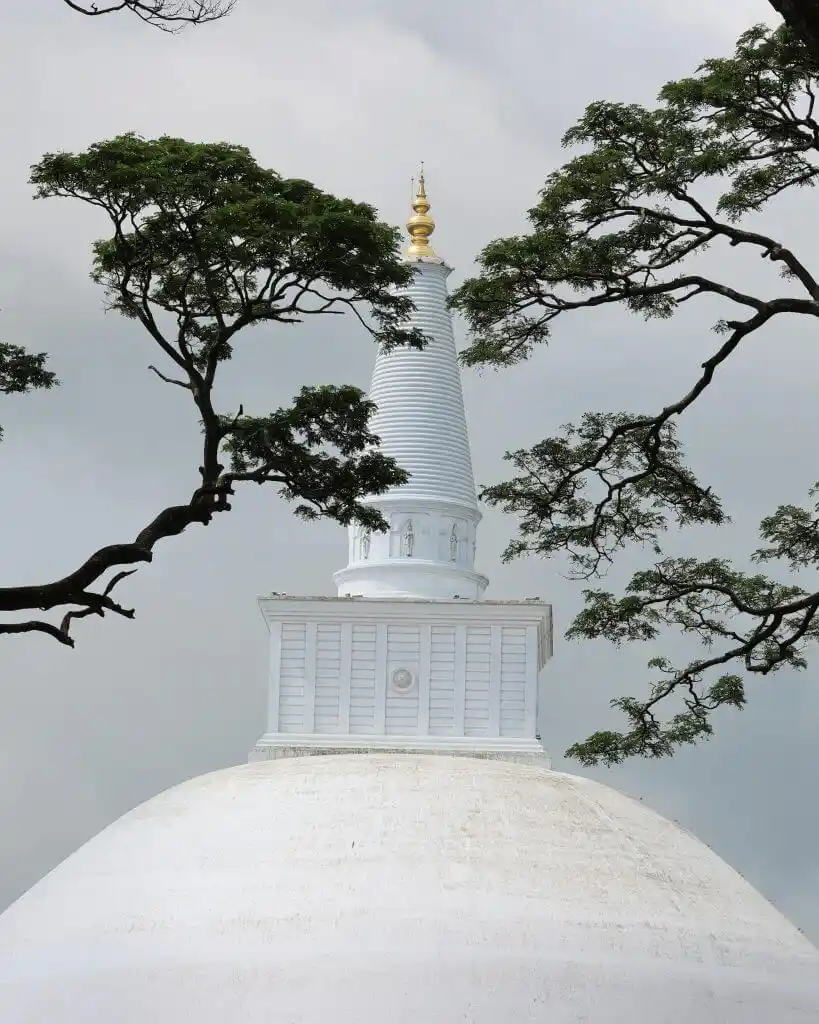
Heritage Triangle Cities
Anuradhapura
🏛️ UNESCO World Heritage Site: 1982
🕉️ Bodhi Tree Shrine: Visit the Sri Maha Bodhi, planted over 2,300 years ago and considered the world’s oldest documented tree.
🗿 Majestic Stupas: Admire ancient engineering marvels like the Ruwanwelisaya, Jetavanaramaya, and Abhayagiri Dagobas.
⛲ Advanced Hydraulic Systems: Witness the ingenuity of ancient Sri Lankan engineers with reservoirs like Basawakkulama and Twin Ponds.
🌿 Peaceful Pilgrimage: Immerse yourself in spiritual tranquility amidst sacred temples and serene landscapes.
INTroduction
Anuradhapura is one of Sri Lanka’s most historically and spiritually significant cities. It served as the first capital of Sri Lanka and was the center of Buddhism, culture, and advanced engineering for over 1,300 years (from the 4th century BC to the 10th century AD).
Today, it is recognized as a UNESCO World Heritage Site and continues to be an important pilgrimage site for Buddhists. The city is home to some of the largest and oldest stupas, sacred temples, and ancient reservoirs in the world, showcasing the brilliance of Sri Lanka’s early civilizations.
The Historic Legacy of Anuradhapura
Anuradhapura, founded in the 4th century BC by King Pandukabhaya, became Sri Lanka’s first great capital. It was a well-planned city with reservoirs, temples, and palaces. During the reign of King Devanampiya Tissa (247–207 BC), Buddhism was introduced by Arahat Mahinda, turning the city into a major center of Buddhist learning and culture. Many great kings, including Dutugemunu, Valagamba, and Mahasena, expanded the city, constructing massive stupas, monasteries, and irrigation systems. Anuradhapura became one of the largest cities in South Asia, but in the 10th century AD, repeated South Indian invasions led to its decline, and the capital was moved to Polonnaruwa.
Anuradhapura was famous for its advanced engineering and architecture. The city had an impressive water management system, with large reservoirs supplying water for farming and daily use. Some of the most famous reservoirs include Tissa Wewa, Nuwara Wewa, and Kala Wewa, which were built with advanced hydraulic engineering. The Twin Ponds (Kuttam Pokuna) show the knowledge of water purification, using underground pipes to filter water before it reached the ponds. The city also had remarkable structures like the Moonstone (Sandakada Pahana), Guard Stones (Muragala), and massive stupas such as Jetavanaramaya, built with over 93 million bricks.
Anuradhapura played an important role in Sri Lanka’s history. It was a religious and cultural center, attracting Buddhist monks and scholars from across Asia. The city was also the political and administrative heart of the country, with royal palaces, governance systems, and well-planned roads. It was a major trade hub, exporting gems, spices, and elephants while importing luxury goods from India, Rome, and China.
After nearly 1,300 years of glory, Anuradhapura was abandoned due to invasions. Over time, the jungle covered its ruins, hiding its greatness for centuries. In the 19th century, British explorers rediscovered the city, leading to its restoration. Today, Anuradhapura is a UNESCO World Heritage Site and a symbol of Sri Lanka’s rich history and advanced civilization. Visitors can explore its ancient ruins, sacred temples, and engineering marvels, experiencing the grandeur of one of the greatest ancient capitals in history.
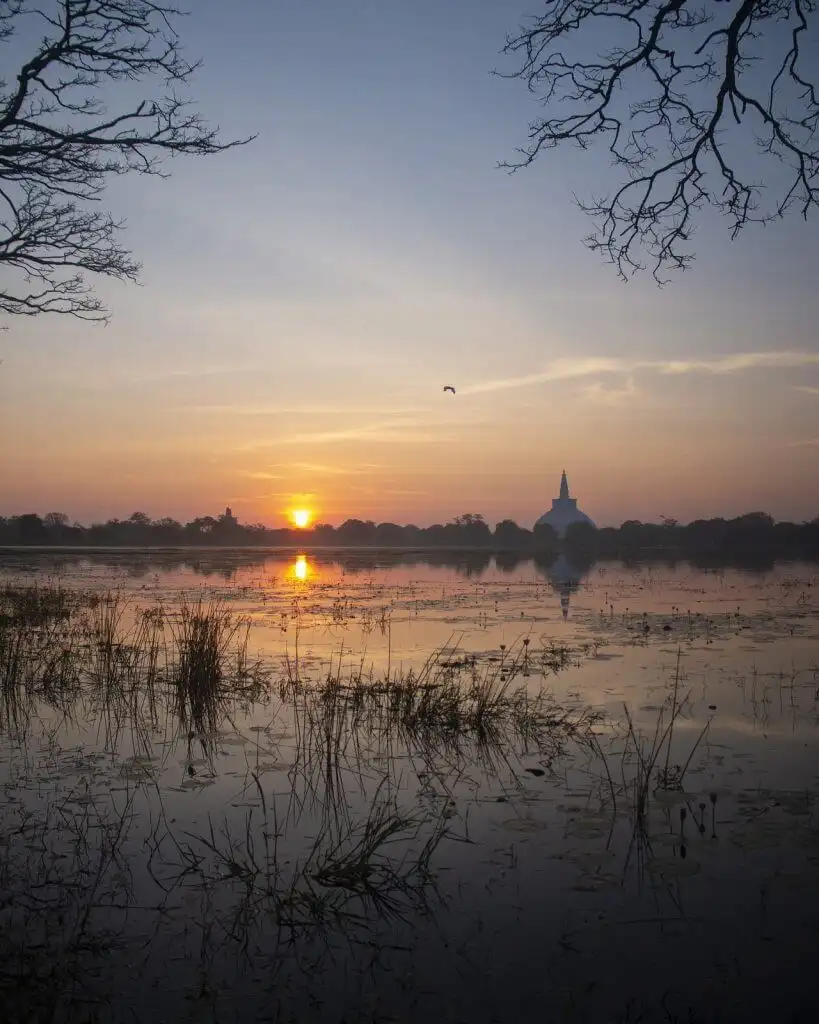
Things to Keep in Mind
Dress Code: When visiting sacred sites, dress modestly (covering shoulders and knees).
Footwear: Visitors are often required to remove shoes and hats when entering temple premises.
Timing: Early mornings and late afternoons are best for exploring ruins, as midday temperatures can be quite high.
Guides: Hiring a knowledgeable guide can greatly enhance your understanding of the historical and religious context.
When Should You Visit the ANURADHAPURA City?
Cultural and Religious Observances
Poya (Full Moon) Days: Sri Lanka observes a public holiday every full moon day, and Anuradhapura’s sacred sites become even more vibrant with pilgrims lighting lamps, offering flowers, and engaging in traditional rituals.
Major Buddhist Festivals:
- Vesak (May): A significant festival commemorating the birth, enlightenment, and passing of Lord Buddha. Temples and streets are decorated with lanterns and lights.
- Poson (June): Especially important for Anuradhapura and the nearby Mihintale area, as it marks the introduction of Buddhism to Sri Lanka by Mahinda Thero. Pilgrims flock in large numbers, and the atmosphere is solemn yet festive.
Visiting during these festivals can provide a deeper cultural and spiritual experience, but expect larger crowds and potential increases in accommodation prices.
Dry Season (February–September)
- February to early May: Generally hot and dry, with lower rainfall and sunny days—ideal for exploring outdoor ruins without interruption.
- June to September: Also relatively dry, but temperatures can be very high, so plan for early morning or late afternoon site visits.
Rainy Season (October–January)
The North Central Province experiences heavier rainfall during these months due to the northeast monsoon. You can still visit, but be prepared for occasional downpours that might limit sightseeing time.
Getting to Anuradhapura: Travel Options and Tips
By Train
Traveling by train to Anuradhapura offers a scenic and comfortable journey through Sri Lanka’s lush countryside.
- Route: The Colombo to Anuradhapura train line is a popular option, with several daily trains.
- Duration: Approximately 4.5 to 5 hours from Colombo Fort Railway Station.
- Types of Trains: Choose from intercity express trains for a faster trip or slower regional trains for budget-friendly travel.
- Class Options: First, second, and third-class seating available. First-class offers air-conditioned comfort, while second-class provides reserved seats without A/C.
- Pro Tip: Book tickets in advance during peak travel seasons.
By Bus
Buses are an affordable and frequent option for reaching Anuradhapura.
- From Colombo: Regular buses operate from Colombo Central Bus Stand (Pettah) to Anuradhapura. Options include express (AC) or normal buses.
- Duration: Approximately 4.5 to 5.5 hours, depending on the type of bus.
- Other Starting Points: Direct buses also operate from cities like Kandy, Jaffna, and Trincomalee.
- Pro Tip: Opt for express or semi-luxury buses for a more comfortable ride.
By Car or Taxi
Hiring a private car or taxi is the most convenient option, especially for families or groups.
- From Colombo: The drive takes about 3.5 to 4 hours (approximately 200 km) via the A9 highway.
- From Kandy: A 2.5 to 3-hour drive (about 130 km) on well-maintained roads.
- Cost: Prices vary based on vehicle type and distance but expect around LKR 12,000–15,000 for a one-way trip from Colombo.
- Pro Tip: Consider booking through reliable transport services or apps like PickMe or Uber.
Tips for Travelers
- Peak Travel Times: Avoid traveling during public holidays or long weekends as trains and buses can be crowded.
- Early Bookings: Reserve train or bus tickets early, especially for first-class train seats or luxury bus options.
- Local Knowledge: For the best experience, consider hiring a local guide to help navigate the city and its attractions.
interactive MAP
Explore More Heritage Triangle Cities!
Don’t stop at Anuradhapura—uncover the marvels of Sri Lanka’s ancient heritage. Choose your next destination.
Select Your Next City Now! 👉

